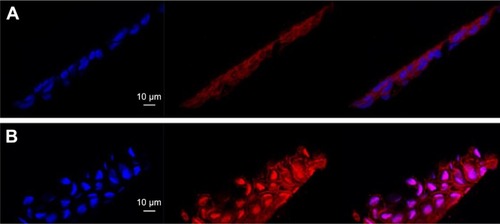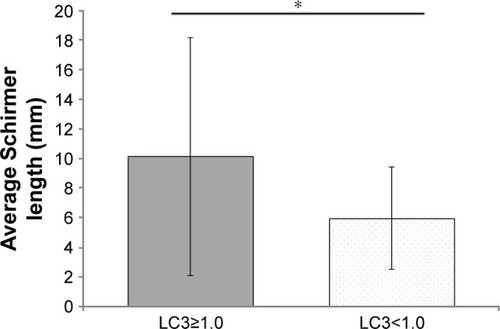Figures & data
Table 1 Baseline patient characteristics
Figure 1 Confocal images of conjunctival epithelium stained with LC3.
Abbreviation: LC3, microtubule-associated protein light chain 3.

Table 2 Patient characteristics stratified based on LC3 status
Figure 2 Significantly higher Schirmer scores were obtained in samples with LC3 ratios ≥1.0 (P<0.05).
Abbreviations: ANOVA, analysis of variance; LC3, microtubule-associated protein light chain 3.

Table 3 Pearson’s correlation coefficients
